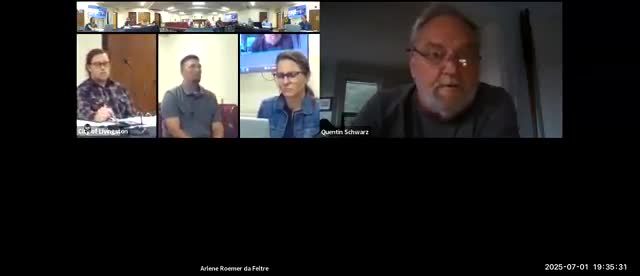Livingston City Commission addresses traffic impacts of proposed 240 residence development
July 06, 2025 | Livingston City, Park County, Montana
This article was created by AI summarizing key points discussed. AI makes mistakes, so for full details and context, please refer to the video of the full meeting. Please report any errors so we can fix them. Report an error »

The City Commission of Livingston, Montana, convened on July 6, 2025, to discuss several pressing issues, primarily focusing on a proposed development project and its implications for the community. The meeting highlighted concerns regarding land use, traffic management, and emergency preparedness as the city anticipates the addition of 240 new residences.
The discussion began with a review of the proposed development's density and land consumption. One commissioner emphasized that the clustered style of the new project would utilize significantly less land compared to traditional single-family residences, which would require over 120 acres for the same number of homes. This approach was viewed favorably as it aims to create more housing opportunities while minimizing land use.
However, traffic concerns emerged as a critical issue. Commissioners noted that the traffic study did not fully account for other approved developments in the area, raising questions about the accuracy of projected traffic impacts. The level of service at intersections, which measures delays, was identified as a liability for economic productivity and safety in the North Side. The mixed-use nature of the development was mentioned as a potential mitigating factor, as it could reduce vehicle trips by encouraging residents to walk to nearby services.
The commissioners acknowledged the need for an evacuation plan to ensure public safety, particularly as the North Side's population grows. They discussed the timeline for the development, indicating that the full build-out would take several years, allowing time for the city to prepare and educate residents about emergency procedures.
The conversation also touched on the financial implications of infrastructure improvements, such as a proposed crossing, which would require community support and funding. Commissioners stressed the importance of transparency in communicating the costs and impacts of such projects to the public.
In conclusion, the meeting underscored the complexities of urban development in Livingston, balancing the need for housing with traffic management and safety concerns. The commission recognized the responsibility to address these challenges proactively, ensuring that future developments align with community needs and expectations. As the city moves forward, ongoing public engagement and careful planning will be essential to navigate the evolving landscape of Livingston.
The discussion began with a review of the proposed development's density and land consumption. One commissioner emphasized that the clustered style of the new project would utilize significantly less land compared to traditional single-family residences, which would require over 120 acres for the same number of homes. This approach was viewed favorably as it aims to create more housing opportunities while minimizing land use.
However, traffic concerns emerged as a critical issue. Commissioners noted that the traffic study did not fully account for other approved developments in the area, raising questions about the accuracy of projected traffic impacts. The level of service at intersections, which measures delays, was identified as a liability for economic productivity and safety in the North Side. The mixed-use nature of the development was mentioned as a potential mitigating factor, as it could reduce vehicle trips by encouraging residents to walk to nearby services.
The commissioners acknowledged the need for an evacuation plan to ensure public safety, particularly as the North Side's population grows. They discussed the timeline for the development, indicating that the full build-out would take several years, allowing time for the city to prepare and educate residents about emergency procedures.
The conversation also touched on the financial implications of infrastructure improvements, such as a proposed crossing, which would require community support and funding. Commissioners stressed the importance of transparency in communicating the costs and impacts of such projects to the public.
In conclusion, the meeting underscored the complexities of urban development in Livingston, balancing the need for housing with traffic management and safety concerns. The commission recognized the responsibility to address these challenges proactively, ensuring that future developments align with community needs and expectations. As the city moves forward, ongoing public engagement and careful planning will be essential to navigate the evolving landscape of Livingston.
View full meeting
This article is based on a recent meeting—watch the full video and explore the complete transcript for deeper insights into the discussion.
View full meeting
